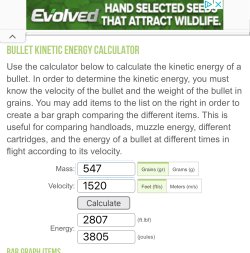lancetkenyon
Well-Known Member
Back when I had a .270Win, I had a 130 NBT load for deer @ 3150, and a 150 VLD load for elk @ 3020. Both shot equally well.
Once I actually started LEARNING about ballistics and terminal performance, I only loaded the 150s. We killed a lot of game with it over the years. Deer and elk. A lot of first kills too. Including my Dad's first deer.
Once I actually started LEARNING about ballistics and terminal performance, I only loaded the 150s. We killed a lot of game with it over the years. Deer and elk. A lot of first kills too. Including my Dad's first deer.


